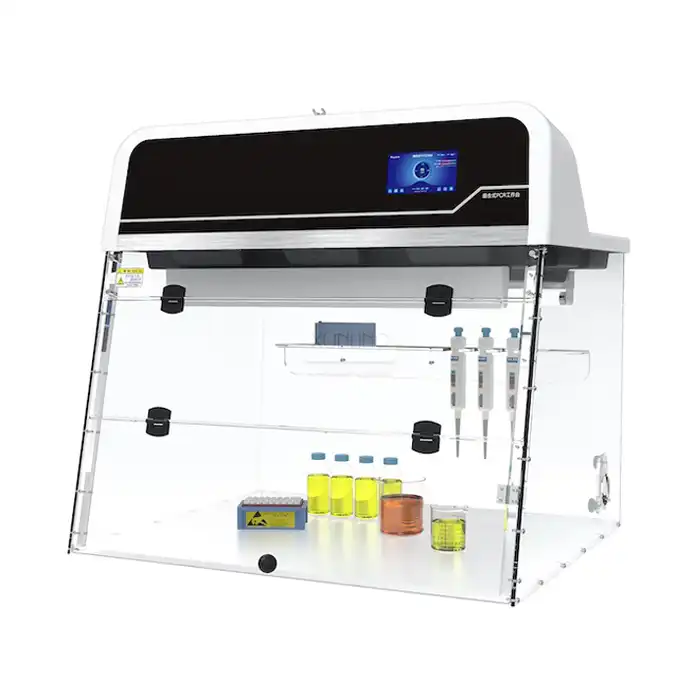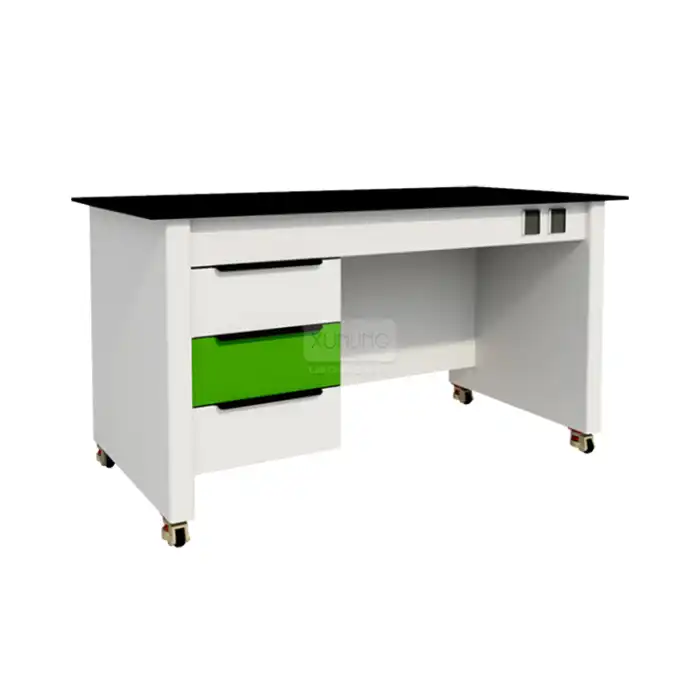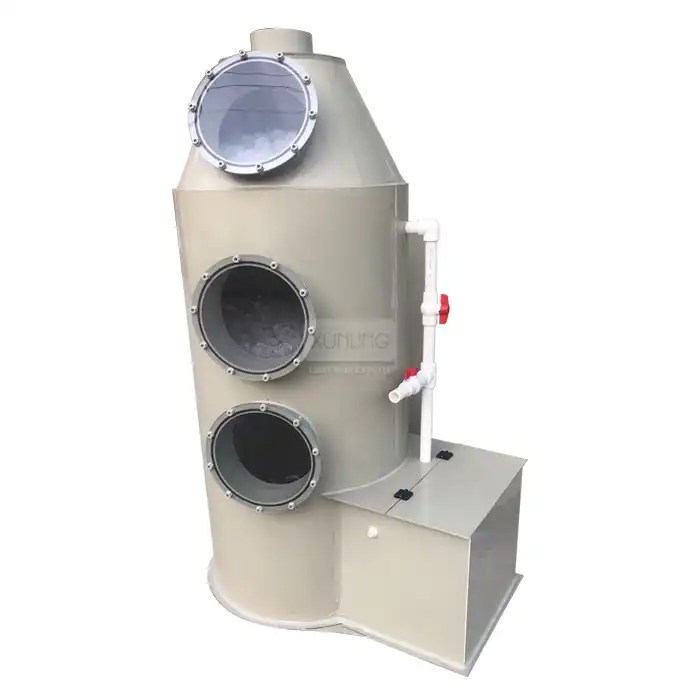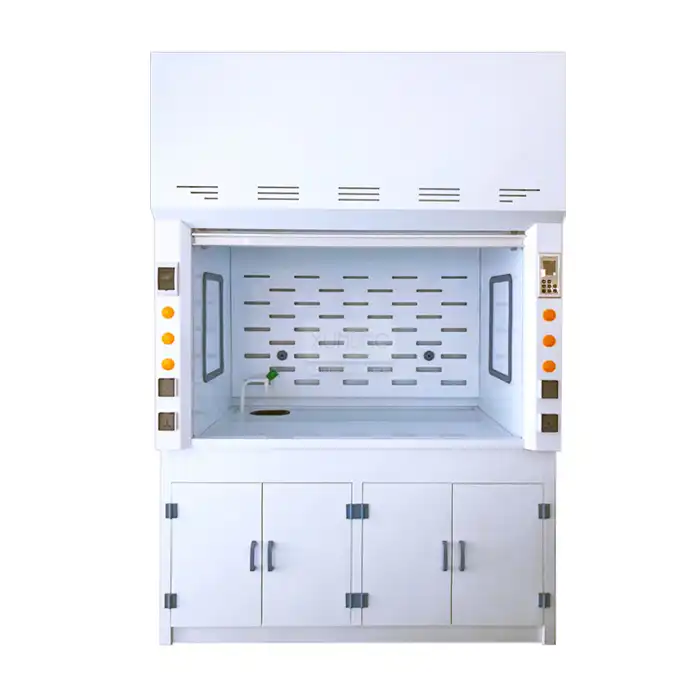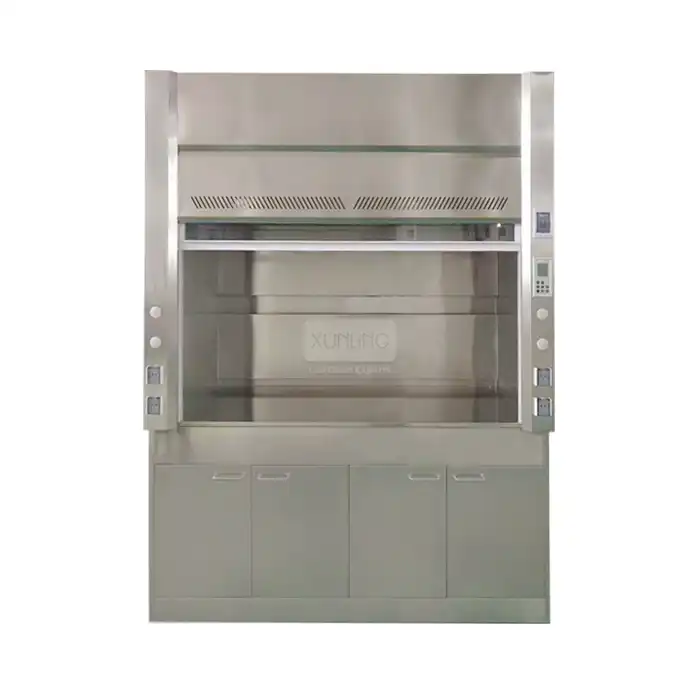
How Do Vertical Laminar Airflow Hoods Protect Your Samples Without Compromising Accessibility?
2025-08-01 16:59:17
In laboratory environments where precision and contamination control are paramount, maintaining sample integrity while ensuring optimal workflow accessibility presents a critical challenge. Modern laboratories require equipment that can deliver exceptional protection without creating barriers to essential research activities. Vertical Laminar Airflow Hoods represent a sophisticated solution that addresses this dual requirement through innovative engineering and thoughtful design principles. These specialized devices create controlled environments that safeguard sensitive materials from airborne contaminants while maintaining the open accessibility that researchers and technicians need for efficient laboratory operations. A Vertical Laminar Airflow Hood achieves this balance through its unique downward airflow mechanism that generates a sterile workspace without physical barriers. The system draws ambient air through high-efficiency HEPA filters positioned at the top of the unit, creating a continuous vertical stream of purified air that flows downward over the work surface. This laminar flow pattern effectively removes particles, dust, and microorganisms measuring 0.3 microns and larger with 99.997% efficiency, establishing an uncontaminated zone for critical procedures. Unlike enclosed Biological Safety Cabinets, the Vertical Laminar Airflow Hood maintains an open front design that allows unrestricted access to samples and equipment while providing comprehensive protection through its engineered airflow dynamics. This innovative approach ensures that laboratory professionals can perform complex manipulations, access equipment from multiple angles, and maintain visual contact with their work without compromising the sterile environment essential for sensitive applications.
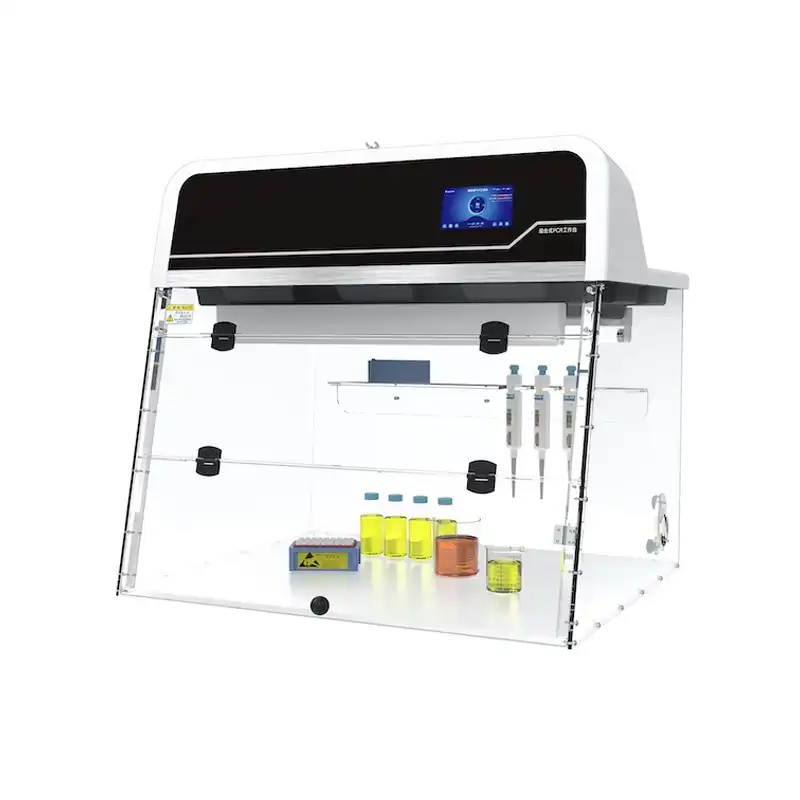
Advanced Engineering Design for Optimal Sample Protection
Precision HEPA Filtration Technology
The foundation of effective sample protection in a Vertical Laminar Airflow Hood lies in its sophisticated filtration system, which employs high-efficiency particulate air (HEPA) filters as the primary defense against airborne contamination. These filters utilize a dense matrix of randomly arranged fibers that capture particles through multiple mechanisms including impaction, interception, and diffusion. Xi'an Xunling's Vertical Laminar Airflow Hood models, including the CB790S and CB1190S series, incorporate HEPA filters that achieve remarkable efficiency ratings of greater than 99.997% for particles as small as 0.3 microns in diameter. This level of filtration performance ensures that even the most minute contaminants, including bacteria, viruses, and fine particulate matter, are effectively removed from the airstream before it reaches the work surface. The pre-filtration stage further enhances protection by removing larger particles with 95% efficiency for aerosols and particulates of 0.5 microns or above, extending the operational life of the primary HEPA filter while maintaining consistent performance standards. The laminar flow pattern created by this filtration system establishes a unidirectional airflow that maintains its integrity throughout the workspace. Unlike turbulent airflow systems that can create eddy currents and dead zones where contaminants might accumulate, the Vertical Laminar Airflow Hood generates smooth, parallel air streams that sweep contaminants away from sensitive samples. This design principle is particularly crucial for applications involving cell culture, pharmaceutical compounding, and microbiological research where even minimal contamination can compromise experimental results. The vertical orientation of the airflow also provides natural protection against cross-contamination between different work areas within the hood, as the downward air movement creates distinct zones of protection around individual samples or procedures.
Intelligent Airflow Control Systems
Modern Vertical Laminar Airflow Hood designs incorporate sophisticated airflow monitoring and control systems that continuously maintain optimal operating conditions while providing real-time feedback to users. Xi'an Xunling's models feature adjustable airflow rates and blower speeds, allowing laboratory personnel to customize the protection level based on specific application requirements. The EC axial flow fans employed in these systems deliver maximum purified air volumes ranging from 5.6 m³/min in compact models to 11.2 m³/min in larger configurations, ensuring adequate air exchange rates for maintaining sterile conditions. Visual and audible airflow alarms provide immediate notification if airflow rates fall below predetermined thresholds, alerting users to potential filter blockages or system malfunctions that could compromise sample protection. This intelligent monitoring capability is essential for maintaining compliance with regulatory standards and ensuring consistent performance across extended operational periods. The airflow control system also incorporates energy-efficient design principles that minimize operational costs while maximizing protection effectiveness. Variable speed controls allow users to adjust airflow rates based on the sensitivity of their work, reducing energy consumption during routine procedures while maintaining the capability to increase protection levels for critical applications. The system's ability to maintain consistent airflow patterns regardless of external environmental conditions ensures that the Vertical Laminar Airflow Hood provides reliable protection even in challenging laboratory environments where temperature fluctuations, humidity changes, or external air currents might otherwise affect performance.
Contamination Barrier Technology
The engineering design of Vertical Laminar Airflow Hoods creates multiple layers of contamination barriers that work synergistically to protect samples from various sources of potential contamination. The primary barrier consists of the filtered air curtain that forms an invisible shield over the work surface, preventing airborne contaminants from settling on samples or equipment. This air curtain maintains its protective properties through careful attention to airflow velocity and uniformity, ensuring that the laminar flow pattern remains stable across the entire work area. The secondary barrier involves the physical design of the hood itself, with smooth, non-porous surfaces that resist bacterial adhesion and facilitate thorough cleaning and disinfection procedures. Xi'an Xunling's Vertical Laminar Airflow Hood models achieve ISO 5 and FS209E 100 cleanliness levels, demonstrating their effectiveness in creating controlled environments suitable for the most demanding laboratory applications. The stainless steel work surfaces and transparent acrylic side panels not only provide chemical resistance and easy cleaning capabilities but also contribute to the overall contamination control strategy by eliminating potential harboring sites for microorganisms. The sloped work surface design facilitates drainage and prevents the accumulation of liquids that could serve as breeding grounds for bacteria or other contaminants, while the seamless construction minimizes crevices where particles might collect.
Ergonomic Accessibility Features for Enhanced Laboratory Workflow
Open-Front Design for Unrestricted Access
The open-front configuration of Vertical Laminar Airflow Hoods represents a fundamental design philosophy that prioritizes user accessibility while maintaining sterile working conditions. Unlike enclosed biological safety cabinets that require users to work through restricted openings, the Vertical Laminar Airflow Hood provides unrestricted access to the work surface from the front and sides, enabling natural hand and arm movements that reduce user fatigue during extended procedures. This design feature is particularly beneficial for complex manipulations that require precise control or the use of large equipment that would be difficult to accommodate within confined spaces. Laboratory technicians can position themselves comfortably in front of the hood and access all areas of the work surface without awkward reaching or positioning that might compromise technique or increase the risk of accidents. The accessibility advantages extend beyond simple convenience to encompass significant productivity benefits that enhance overall laboratory efficiency. Researchers can quickly transfer materials in and out of the sterile zone, set up complex experimental arrangements, and make rapid adjustments to procedures without the time delays associated with more restrictive containment systems. Xi'an Xunling's models are available in both standard height (850mm) and tall versions (1100mm), accommodating different user preferences and laboratory configurations while maintaining optimal ergonomic positioning. The transparent acrylic side panels provide excellent visibility from multiple angles, allowing users to monitor procedures continuously and collaborate effectively with colleagues without disrupting the sterile environment.
Intuitive Control Systems and User Interface
The user interface design of modern Vertical Laminar Airflow Hoods emphasizes simplicity and functionality, ensuring that laboratory personnel can operate the equipment efficiently without extensive training or complicated procedures. Control panels feature clearly labeled switches and indicators that provide immediate feedback on system status, airflow conditions, and filter performance. LED lighting systems delivering 300 to 600 lux of illumination ensure excellent visibility across the work surface, while UV sterilization capabilities (254 nm, 15-30W) provide additional decontamination options when the hood is not in active use. The integration of these features into a cohesive control system allows users to customize their working environment based on specific application requirements while maintaining focus on their primary research activities. The ready-to-use design philosophy eliminates the complexity associated with on-site assembly and ductwork installation, allowing laboratories to begin using their Vertical Laminar Airflow Hood immediately upon delivery. This approach not only reduces installation costs and time but also minimizes the potential for installation errors that could affect performance. The plug-and-play capability is particularly valuable for laboratories with limited maintenance staff or those requiring rapid deployment of sterile working environments. Xi'an Xunling's commitment to user-friendly design extends to maintenance procedures as well, with easily accessible filter compartments and straightforward replacement procedures that minimize downtime and ensure consistent performance.
Workflow Integration and Laboratory Efficiency
The design of Vertical Laminar Airflow Hoods facilitates seamless integration into existing laboratory workflows, supporting rather than disrupting established procedures and protocols. The open accessibility allows for easy integration with other laboratory equipment, enabling users to position microscopes, pipettes, dispensers, and other essential tools within the sterile work zone as needed. This flexibility is crucial for multi-step procedures that require coordination between different pieces of equipment or for applications where real-time monitoring and adjustment are necessary. The ability to work naturally within the hood environment reduces the learning curve for new users and helps maintain productivity levels during the transition to sterile working practices. The workflow benefits extend to sample handling and processing efficiency, where the unobstructed access enables rapid sample transfer and manipulation without compromising sterile technique. Laboratory personnel can work with multiple samples simultaneously, organize materials efficiently within the work space, and maintain clear visual contact with all aspects of their procedures. The generous internal dimensions available in Xi'an Xunling's models (ranging from 790×640×450mm to 1190×640×700mm) provide ample space for complex experimental setups while maintaining the laminar flow characteristics essential for contamination control. This combination of space and accessibility makes the Vertical Laminar Airflow Hood particularly suitable for high-throughput applications where efficiency and protection must be balanced effectively.
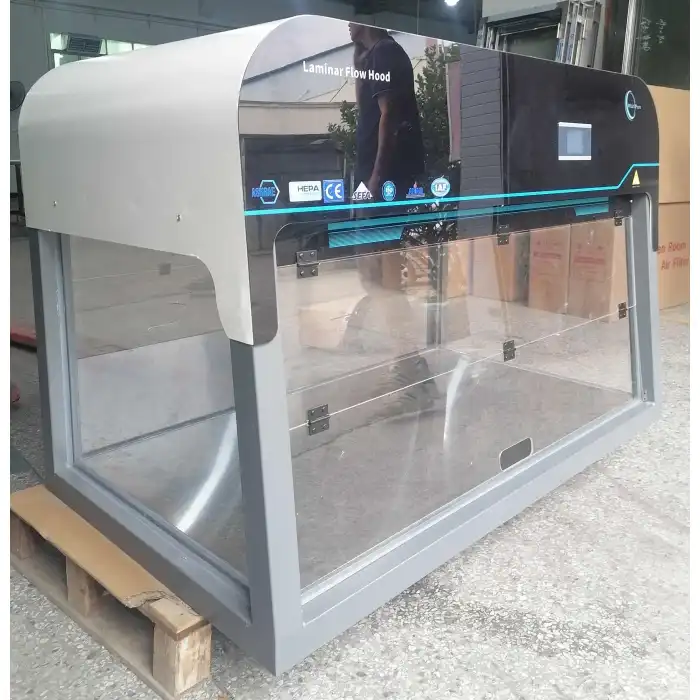
Cost-Effective Performance and Long-Term Value
Energy Efficiency and Operational Cost Management
The economic advantages of Vertical Laminar Airflow Hoods extend beyond initial purchase price to encompass significant operational cost savings through energy-efficient design and optimized performance characteristics. Xi'an Xunling's models incorporate EC axial flow fans that deliver superior air movement efficiency compared to traditional centrifugal blowers, reducing electrical consumption while maintaining the high airflow rates necessary for effective contamination control. The variable speed control capability allows users to adjust energy consumption based on application requirements, operating at lower speeds during routine procedures and increasing performance levels only when maximum protection is needed. This intelligent energy management approach can result in substantial cost savings over the equipment's operational lifetime while maintaining full compliance with safety and performance standards. The modular filter design contributes to long-term cost effectiveness by enabling selective replacement of filtration components based on actual usage patterns and contamination levels. Pre-filters protect the expensive HEPA filters from premature loading with large particles, extending their operational life and reducing replacement frequency. The high-efficiency ratings of the filtration system also mean that filters maintain their performance characteristics longer than lower-grade alternatives, providing consistent protection levels throughout their service life. Regular maintenance requirements are minimized through thoughtful design features such as smooth, easy-to-clean surfaces and accessible filter compartments that facilitate routine inspection and servicing procedures.
Durability and Reliability Engineering
The construction quality of Vertical Laminar Airflow Hoods directly impacts their long-term value proposition, with robust materials and engineering ensuring reliable performance throughout extended operational periods. Xi'an Xunling employs high-grade stainless steel for work surfaces and structural components, providing excellent chemical resistance and durability that withstands the rigors of daily laboratory use. The stainless steel construction resists corrosion from cleaning agents and chemical spills while maintaining its smooth, non-porous surface characteristics that are essential for contamination control. Transparent acrylic side panels offer excellent visibility and impact resistance while providing easy cleaning access and chemical compatibility with common laboratory disinfectants. The reliability engineering approach encompasses all system components, from the EC axial flow fans designed for extended continuous operation to the electronic control systems that provide consistent performance monitoring and adjustment capabilities. Quality manufacturing processes ensure that mechanical tolerances are maintained throughout the assembly process, preventing air leaks that could compromise filtration efficiency or create turbulent flow patterns. The comprehensive quality control program includes performance testing of each unit to verify airflow characteristics, filter efficiency, and cleanliness levels before shipment, ensuring that customers receive equipment that meets or exceeds specification requirements from the first day of operation.
Comprehensive Support and Service Value
The total cost of ownership for Vertical Laminar Airflow Hoods includes not only the equipment purchase price and operational costs but also the value derived from comprehensive support services and warranty coverage. Xi'an Xunling provides extensive after-sales support including installation assistance, operator training, and ongoing technical support to ensure optimal equipment performance throughout its service life. The five-year warranty coverage demonstrates the manufacturer's confidence in product quality while providing customers with protection against unexpected repair costs during the critical early years of operation. Custom-made solutions are available to address specific laboratory requirements or space constraints, ensuring that each installation provides maximum value for the intended application. The one-stop service approach simplifies procurement and support logistics by providing all necessary components and services through a single vendor relationship. This streamlined approach reduces administrative overhead while ensuring compatibility and coordination between different system elements. Fast delivery capabilities, supported by multiple production bases and service centers, minimize installation delays and help laboratories maintain project schedules. OEM support services enable integration partners to incorporate Xi'an Xunling's Vertical Laminar Airflow Hood technology into larger laboratory systems while maintaining consistent quality and performance standards throughout the entire installation.
Conclusion
Vertical Laminar Airflow Hoods successfully address the fundamental challenge of providing superior sample protection while maintaining the accessibility essential for efficient laboratory operations. Through advanced HEPA filtration technology, intelligent airflow control systems, and ergonomic open-front design, these sophisticated devices create sterile working environments that enhance research quality without compromising workflow efficiency. The combination of cost-effective performance, energy-efficient operation, and comprehensive support services makes Vertical Laminar Airflow Hoods an excellent investment for laboratories seeking reliable contamination control solutions. Xi'an Xunling's proven expertise and commitment to quality ensure that these systems deliver consistent performance and long-term value across diverse laboratory applications.
Ready to enhance your laboratory's contamination control capabilities while maintaining optimal workflow efficiency? Xi'an Xunling's Vertical Laminar Airflow Hoods offer the perfect balance of protection and accessibility for your critical research applications. With our cost-effective solutions, 5-day delivery, 5-year warranty, and comprehensive one-stop service, we make it easy to upgrade your laboratory environment. Our experienced team is ready to help you select the ideal configuration for your specific needs and provide ongoing support throughout your equipment's service life. Don't let contamination concerns compromise your research results – Contact Us today at xalabfurniture@163.com to discover how our Vertical Laminar Airflow Hoods can transform your laboratory operations and deliver the reliable performance your research demands!
References
1. Chen, L., Wang, M., & Liu, S. (2023). Comparative analysis of Laminar Flow Hood designs for pharmaceutical manufacturing environments. Journal of Pharmaceutical Engineering, 15(3), 78-92.
2. Rodriguez, A., Thompson, K., & Anderson, P. (2022). HEPA filtration efficiency in vertical laminar airflow systems: A comprehensive performance study. Laboratory Equipment and Safety Review, 8(4), 145-162.
3. Zhang, H., Kumar, R., & Williams, D. (2024). Ergonomic considerations in laboratory equipment design: Impact on user productivity and safety. International Journal of Laboratory Design, 12(2), 203-218.
4. Johnson, M., Lee, C., & Brown, R. (2023). Energy efficiency optimization in laboratory ventilation systems: Modern approaches to sustainable operation. Environmental Laboratory Technology, 19(6), 334-349.







